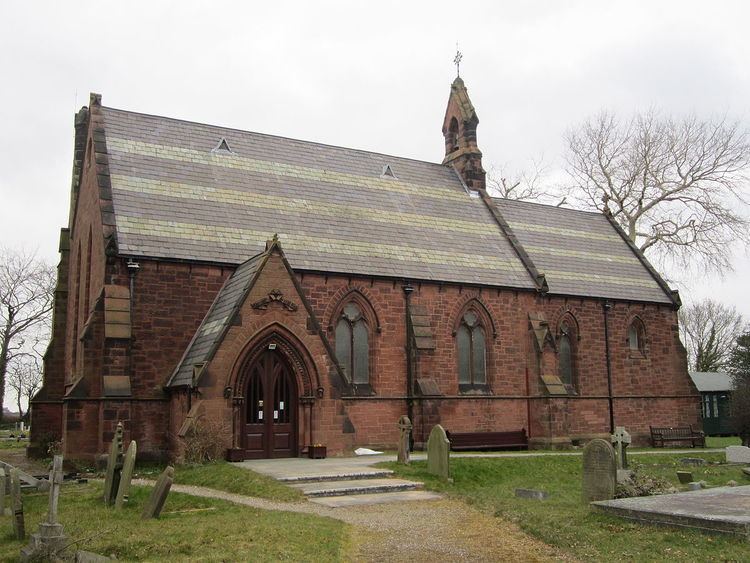Country England Churchmanship Central Opened 1862 | Denomination Anglican Functional status Active Phone +44 151 678 6155 | |
 | ||
Website St John The Divine, Frankby Similar St Hilary's Parish Church, Our Lady and Saint Nicholas, St Cleopas C Of E Church, Harrison Hall, Church of the Good Shepherd | ||
The Church of St John the Divine, is in Frankby Road, Frankby, Wirral, Merseyside, England. It is an active Anglican parish church in the deanery of Wirral, North, the archdeaconry of Chester and the diocese of Chester. Its benefice is united with that of St Nicholas, Greasby. The church is recorded in the National Heritage List for England as a designated Grade II listed building.
Contents
History
The church was built in 1861–62, and was designed by W. and J. Hay.
Exterior
St John's is built in stone and has slate roofs with bands of different colours. It consists of a three-bay nave with a south porch, a north aisle, a chancel, and a north vestry. There is a bellcote on the east gable of the nave. Along the walls of the nave are buttresses and two-light windows containing Geometric tracery, and along the wall of the aisle are paired windows. The east window has three lights.
Interior
Inside the church the arcade is carried on round columns. The chancel arch has corbels, one of which is carved with a sower. There are four chandeliers. The font is round with interlaced blind tracery. On the wall is a dole cupboard. The pulpit has canted ends and it contains a canopied niche. The organ case and pipes are painted, as is the panelled chancel ceiling. On the east wall of the chancel is panelling, and to the south is a double sedilia. In the north aisle are three windows with stained glass of 1873 depicting Old Testament figures. These were made by Morris & Co., and were designed by Edward Burne-Jones. There are two windows by C. E. Kempe dated 1870 and 1871, and the rest are by Clayton and Bell. The two-manual pipe organ was made by H. Wedlake of London.
